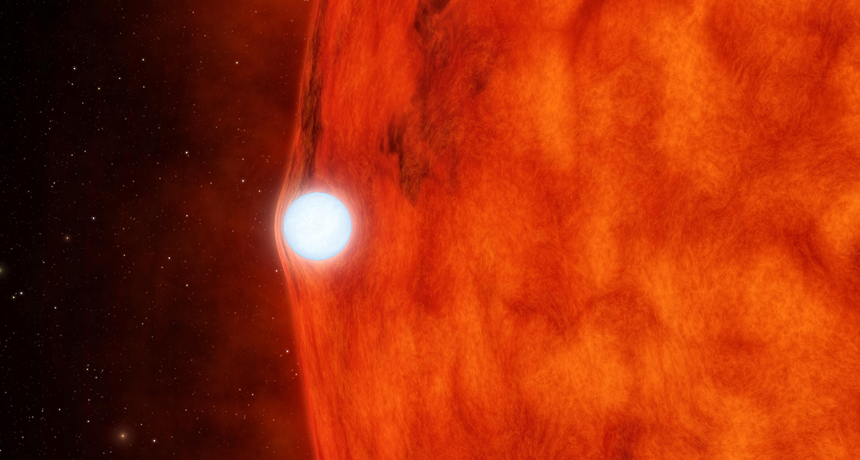Dead star makes a lens for its companion
The intense gravity associated with a white dwarf distorts the light of the star it orbits

A bright white core of a dead star distorts the light of the sunlike star it orbits, as seen here in an artist’s illustration. It’s the first strong evidence for this gravitational lensing in a binary star system.
JPL-CALTECH/NASA







